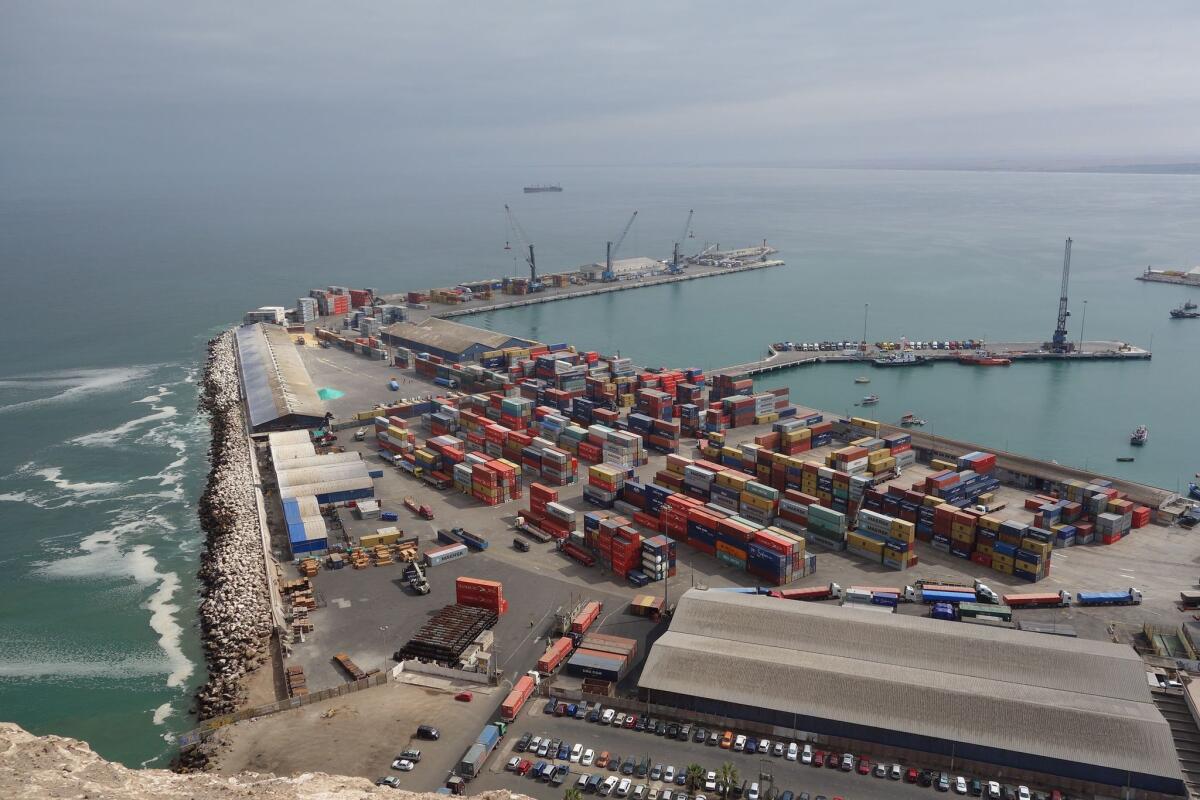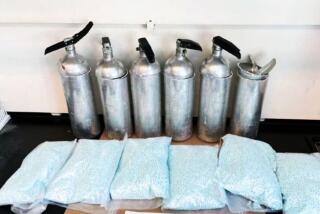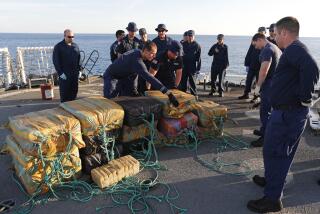Peru may resume shooting down suspected coke-smuggling planes

An upsurge in illicit air shipments of cocaine to Bolivia has prompted neighboring Peru to consider resuming a policy of shooting down small aircraft suspected of ferrying the drug, authorities say.
That policy resulted in the mistaken 2001 shoot-down of a small aircraft, killing an American missionary and her daughter.
Peruvian National Police Gen. Vicente Romero said in an interview last week that his government could decide in the next month whether to reinstate the policy of allowing Peruvian warplanes to shoot down small aircraft thought to be carrying Peruvian cocaine or coca paste to Bolivia or other countries.
Another high-level government source said Sunday that Peru’s congress is considering a law that, if passed in the coming weeks, could give law enforcement greater power to intervene in suspected drug shipments by air, land or sea, including airplane shoot-downs. The source declined to be quoted because he is not authorized to speak to the press.
Bolivia’s status as an air hub for cocaine transport has risen sharply in the last five years. U.S. officials estimate that currently there are more than 500 illicit flights per year between the two countries. Lax law enforcement has also led to traffickers’ using Bolivia to deliver drugs to neighboring Brazil and Argentina, or on to Europe.
The policy shift would be in response to what Peruvian and international counter-narcotics officials describe as a more active cocaine “air bridge” between Peru and Bolivia. Flights can number dozens of planes per day, carrying either Peruvian coca paste or refined cocaine to Bolivia, officials say.
However, the U.S. government opposes a resumption of an aggressive shoot-down policy. The United States played a critical and embarrassing intelligence role in the 2001 tragedy, in which missionary Roni Bowers and her infant daughter died after Peruvian authorities mistook it for a drug flight. Her husband and son and the pilot survived the crash.
In its annual review of countries’ cooperation in the fight against global drug trafficking, the White House last fall said Bolivia “failed demonstrably” to make sufficient efforts to meet its obligations under international counter-narcotics agreements.
The report was not a total condemnation, noting that Bolivia eradicated 25,000 acres of coca crops in 2014 and seized 23 metric tons of cocaine and coca paste. Coca leaves have been used by indigenous communities for chewing since pre-colonial times and Bolivian law permits cultivation of up to 30,000 acres of coca for “cultural purposes.”
But Peruvian authorities describe the government of Bolivian President Evo Morales as unwilling or unable to stop the suspected drug flights. Drug planes typically take off from the eastern jungle region of Peru and land near Santa Cruz, Bolivia, a drug-trafficking hub where Mexican and Colombian drug traffickers openly operate, according to Peruvian and US officials.
Despite having destroyed 198 air strips last year, Peruvian authorities say they cannot exert control over the drug flights’ main departure zone, known as VRAEM, the Spanish-language acronym for the Apurimac-Ene-Mantaro River Valley. The area, an isolated jungle area controlled by the Sendero Luminoso leftist rebel group, may have up to 100 clandestine airstrips operating at a given time, officials say.
“It’s a very difficult geographic area and the Sendero Luminoso is protecting the drug traffickers there,” said one Peruvian law enforcement official who spoke on condition of anonymity because of the political sensitivity of the issue. “The airplanes come in from Bolivia bringing cash and fly back with cargoes averaging around [725 pounds].”
The cocaine is then shipped on to Brazil, Argentina or Europe via west Africa, officials say.
Piloting the illegal aircraft is lucrative, with pilots earning $20,000 per flight, officials here say. As a result, the number of flight schools in the Santa Cruz area has increased from a single one five years ago to seven today. Those schools charge an average $20,000 for a one-week piloting course, up from $5,000 several years ago, officials here said.
Officials in northern Chile also express exasperation with the Bolivian government for weak drug law enforcement, saying traffickers operating in Bolivia increasingly use the Chilean port of Arica to export drugs hidden in cargo containers. In so doing, they are taking advantage of a treaty between Bolivia and Chile by which Bolivian cargo exported via Arica is exempt from inspection unless Bolivian customs officials agree.
In an interview last week, a Chilean port official in Arica said his government inspected about 300 of more than 130,000 cargo containers that passed through Arica and found drugs hidden in two of them. Some of the cocaine seized bore the telltale trademarks of known Mexican and Colombian traffickers.
“We know that Mexican and Colombian traffickers are using the treaty to move drugs in containers through the Arica port,” said the official, who spoke on condition of anonymity because he is not authorized to speak to the press. “What worries us is that at one moment or another the traffickers will enter Chile and force a complete change in the security scheme here.”
Kraul is a special correspondent. Special correspondent Adriana Leon in Lima contributed to this report.
More to Read
Start your day right
Sign up for Essential California for news, features and recommendations from the L.A. Times and beyond in your inbox six days a week.
You may occasionally receive promotional content from the Los Angeles Times.






